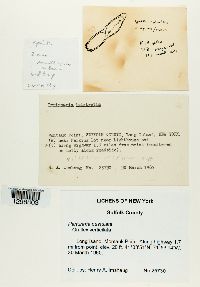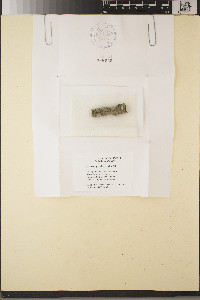
Consortium of Lichen Herbaria
- building a Global Consortium of Bryophytes and Lichens as keystones of cryptobiotic communities -
- Home
- Search
- Images
- Species Checklists
- US States: O-Z >
- US National Parks
- Central America
- South America
- US National Parks
- Southern Subpolar Region
|
|
|
|
Family: Pertusariaceae
[Lichen melaleucus Turner & Borrer, morePertusaria melaleuca (Turner & Borrer) Duby, Pertusaria melaleuca var. cyclops (Körb.) Hepp, Pertusaria melaleuca var. decussata (Kremp.) Müll. Arg., Pertusaria melaleuca var. ginzbergeri Zahlbr., Pertusaria melaleuca var. glabrata (Anzi) H. Olivier, Pertusaria melaleuca var. heterochroa (Müll. Arg.) J. Steiner, Pertusaria melaleuca var. melaleuca (Turner & Borrer) Duby, Pertusaria melaleuca var. octospora Müll.Arg., Pertusaria melaleuca var. tetramera Müll.Arg., Pertusaria melaleuca var. trispora Müll.Arg., Porina pustulata Ach., Porophora pustulata (Leight.) anon., Thelotrema melaleucum (Turner & Borrer) Turner] |
Nash, T.H., Ryan, B.D., Gries, C., Bungartz, F., (eds.) 2002. Lichen Flora of the Greater Sonoran Desert Region. Vol 1. Thallus: continuous to finely fissured or fissured-areolate, with very thin to thin verrucae; margins: entire, unzoned upper surface: yellow-gray to green-gray, smooth to finely tuberculate, shiny, seldom dull, epruinose; lacking soredia or isidia fertile verrucae: concolorous with thallus, ampliariate or erect, numerous, c. 0.3-1.4 mm in diam.; ostioles: 1 or 2-8 per verruca, level, sunken or papillate, often fusing in a central depression to form a pseudolecanorate disc Apothecia: 1-5 per verruca; disc: 0.4-0.8 mm wide, blackish brown, epruinose; epithecium: dark brown to black, K; hypothecium: hyaline asci: cylindrical, 160-320 x 35-60 µm, 2-spored (seldom 1- or 3-spored) ascospores: hyaline, ellipsoid to cylindrical, 45-160 x 26-48 µm; spore wall: 2-layered; outer spore wall c. 1-5 µm thick; inner spore wall: 2-8 µm thick, smooth; apices: up to 20 µm thick Pycnidia: immersed conidia: bacilliform, 9-16 x 1-1.5 µm Spot tests: K+ yellow, C+ orange, KC-, P+ yellow to orange, UV+ orange-red Secondary metabolites: 2-chloro-6-O-methylnorlichexanthone and stictic acid (both major), 4-chloro-6-O-methylnorlichexanthone, constictic, cryptostictic, hypostictic, menegazziaic, thiophaninic acids (all minor). Substrate and ecology: A temperate corticolous species World distribution: Pertusaria pustulata is a cosmopolitan corticolous lichen Sonoran distribution: only known from southern California. Notes: This species is characterized by a greenish to yellowish thallus, ascomata with ostiola which may dilate and fuse to form a small pseudolecanorate disc, a K- epithecium, 2-spored asci and the presence of stictic acid and 2-chloro-6-O-methylnorlichexanthone. A full discussion of this species is found in Dibben (1980) and Archer and Messuti (1997). |
|
|
|
Powered by Symbiota




























































































